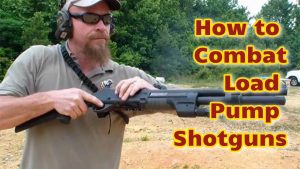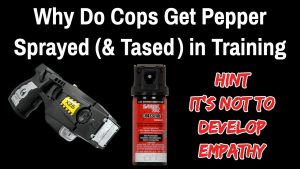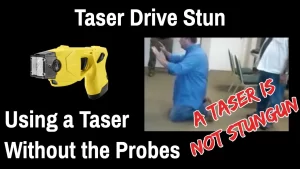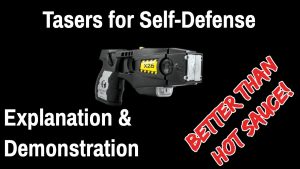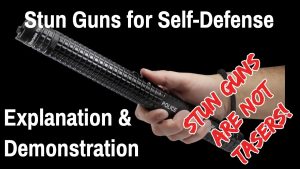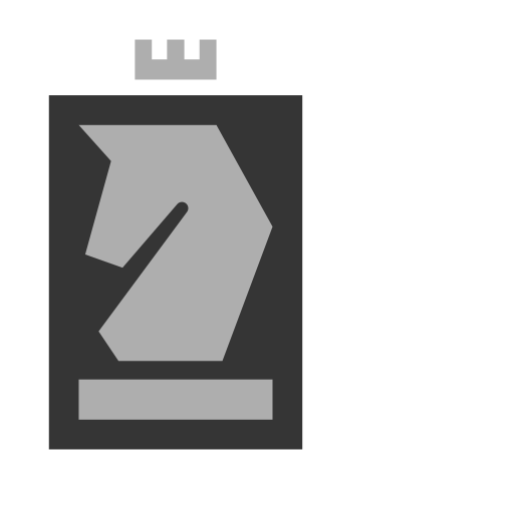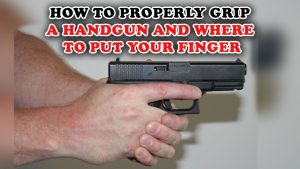
How to Properly Grip a Handgun
Today’s article deals with hands on guns. Specifically how to properly grip a handgun. It also includes where to put Your finger on the trigger.
Surprise Break
The first thing I want to talk about is the term “surprise break”, I think that over the years this term has entered our shooting lexicon from our instructors teaching an idea the same way their instructors taught it, and I personally feel that this term does not accurately describe what we want to occur. Shooting is one action that you must take responsibility for – no matter the reason or the intended outcome the person holding the firearm is 100% responsible for every round that leaves their barrel. The gun firing had best no be a surprise – you had better have intended it to go off. However, what we mean by “surprise break” is that you don’t have a “now” jerk as you fire.
As you hold the firearm, and everything is aligned, your brain is telling you to fire the gun, and your trigger finger is tightening on the trigger, everything is good…. You’re ready to fire…. Finger tightening more… you’re ready to fire…. right…. NOW, and with the NOW you jerk the trigger or push the gun as it goes off.
What we want in (and what your instructor means by) a surprise break is that we smoothly pull the trigger to the rear without the sight disrupting NOW that comes from forcing the shot.
Trigger Placement
This is a general rule. Firearms with a heavier trigger pull (like a double action revolver), and/or individuals without a lot of grip strength, may have to put more of their fingertip into the trigger guard to be able to get enough leverage to pull the trigger smoothly. However as a GENERAL rule, if you put the center of the first digit of your finger squarely on the trigger you will be most able to pull the trigger smoothly without disturbing your sight alignment.
As shown in the video, too much finger in the trigger guard can push the gun barrel away from the shooting hand, and too little finger can pull the barrel toward direction of the shooting hand.
20/80 Grip
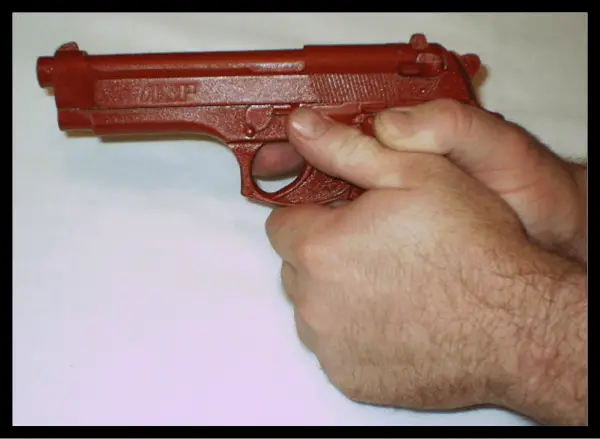
In the video I said a two handed grip should be divided into 20% force from the shooting hand, and 80% force from the non-shooting hand. It may be 30-70 or 25-75 depending on what is comfortable for you. However, what is important is to grip the gun with an amount of pressure equal to a firm handshake. You want to hold it, but not try to crush it.
Something I have my students do is to experiment by holding out their imaginary gun. I have them squeeze their hand together as hard as they can – white knuckle grip – and then while squeezing those 3 supporting fingers, pull their imaginary trigger as fast as they can. Its not an easy thing to do.
Next I will have them loosen their hand and repeat the exercise while loosely making a fist. It is quite obvious which is easier to do. If you want good trigger control you have to ease up a little on your shooting hand’s grip. This leads me to the final thought in this video.
Readjusting After Every Shot
Finally, you can grip the gun too loosely. A strong indicator that you need to tighten up your grip is that if the firearm moves enough in your grip that you feel the need to readjust your grip after every shot.
If you have to wiggle your booger hooks after each shot then it’s going to be hard to get a good consistent shooting stance. Additionally, If the gun moves in your hand during recoil tighten up your grip.
